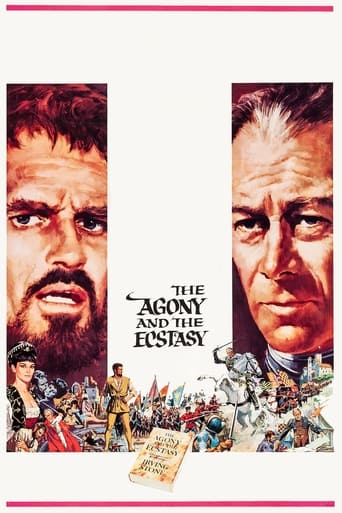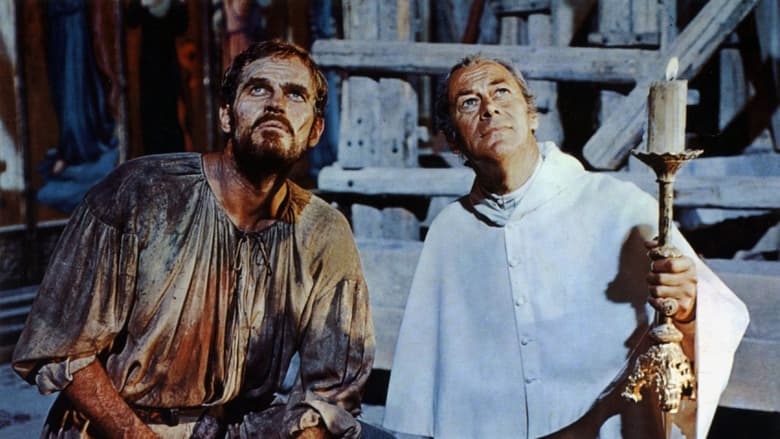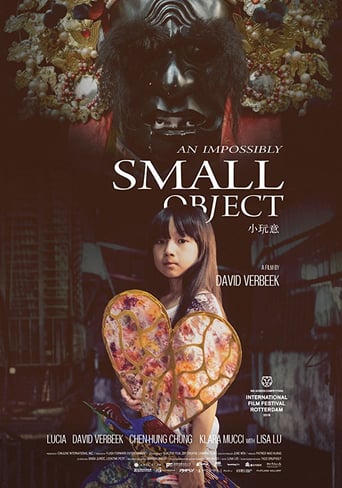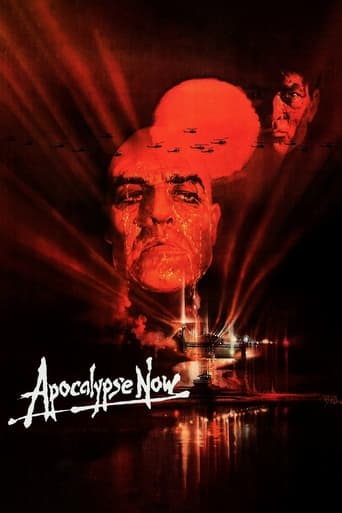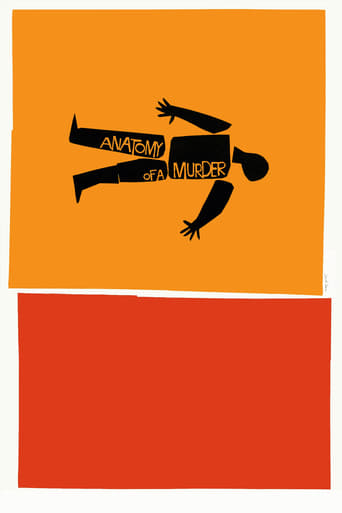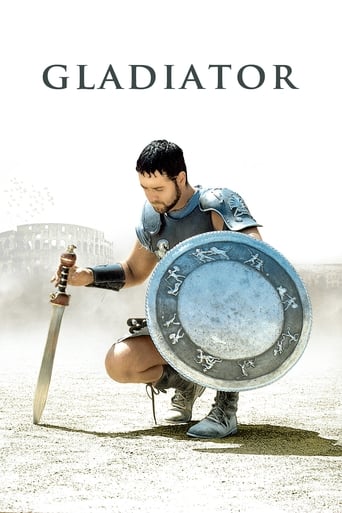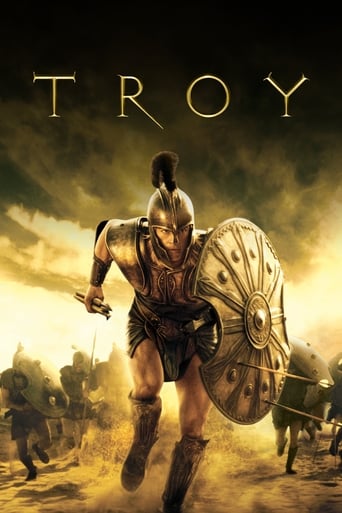The Agony and the Ecstasy (1965)
During the Italian Renaissance, Pope Julius II contracts the influential artist Michelangelo to sculpt 40 statues for his tomb. When the pope changes his mind and asks the sculptor to paint a mural in the Sistine Chapel, Michelangelo doubts his painting skills and abandons the project. Divine inspiration returns Michelangelo to the mural, but his artistic vision clashes with the pope's demanding personality and threatens the success of the historic painting.
Watch Trailer
Cast
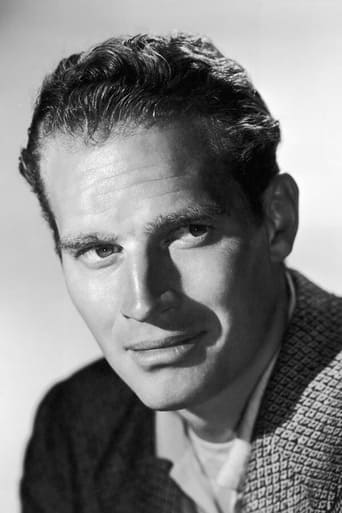


Similar titles
Reviews
(Flash Review)This film paints a picture, pun intended, of the process for how the Sistine Chapel got painted. Pope Julius II commissioned Michelangelo, who was primarily a sculpture, to tackle this impressive frescoes task. Amusing to think Michelangelo's 2nd best trade was painting vs chiseling figures from stone! During the project the two men banter back and forth upon the direction of the frescoes, time it is taking and compensation, which is actually mildly amusing. Pope Julius II is a beast, odd way to describe a Pope, as he still fought in battles on a horse while wearing battle armor. Overall, it doesn't feel as long as it is while it has an epic feel to it. It has some nice historical scenes of the wax and paint dripping in Michelangelo eyes and face and the exhaustive toll it takes on both men. Additionally, the first 15-20 minutes of the film was an actual documentary of the historical Italian art and artists to set the stage for how magnificent the Sistine Chapel truly is.
The story of the rivalry between Pope Julius II and Michelangelo is an epic movie from director Carol Reed, which not only contrasts the lavish life of the Pope with the hardscrabble existence of his famous protégé but also shows the common ground between them - a deep faith. This is early 16th century Italy. Rex Harrison, as the Pope, is a soldier who leads his forces in battle. He believes this is his calling in order to save the Papal States from being overrun by foreigners. He is no 21st century Pope Francis; however, he does appreciate art and the role of great artists to interpret the faith. This explains his relationship with Michelangelo.Rex Harrison dominates every scene he appears in. Harrison is very impressive with his classic voice and an outstanding script and he gives a strong persona to Pope Julius in his long white and red robes. He is a renaissance-warrior pope who has moments when he becomes almost like a kindred spirit of Michelangelo, if only briefly.Julius makes his entrance on a white horse following one of his battles while pieces of bread are thrown to the peasants in the town square. His costumed entourage follow as the people kneel and bless themselves. Overblown definitely; but certainly a grand spectacle. I also was taken by the quarry scenes where stone masons are seen cutting and sculpting marble or workers sawing through it and moving it on pulleys. After first rejecting the idea of painting the Sistine Chapel, Michelangelo comes to embrace it after seeing a vision in the sky that inspired the idea of painting the Creation in the Chapel. The sparring of two strong-willed giants of the early 1500s is a match of forceful arguments; however, because he has the power, Julius is able to have his way. A devout Christian, Michelangelo still did not bend easily to the Pope's will. Later, Michelangelo realizes he needed the pope's determination to force him to finish painting the Sistine Chapel.It is amusing to watch the Pope pass underneath the scaffolding inside the famous chapel as his procession ducks splattering paint, and falling objects. We see Julius chiding the artist for showing disrespect to his cardinals, while defending the frescoes that are being attacked as pagan. Later, we find Julius visiting the bedside of the ailing painter saying that he has been too overbearing and that he will take him off the project, and send him off to his hometown of Florence with a pension while Raphael takes over. This has the intended effect of forcing the painter back to the job. In the end, we see the bond between the artist and the warrior pope whose real legacy might have been that he recognized the talent of the artist Michelangelo, not his role in preventing the sack of Rome. Theirs was more like a troubled father-son relationship. Julius seems to understand the deep faith and timeless quality of Michelangelo's work more than the artist himself who failed to grasp its profound effect on the pope. Julius admitted that he lacked the faith that inspired great art and thus he could not be an artist. Thus, he appreciated it and learned from it.I liked the female lead in the movie, played by Diane Cilento, who had a deep affection for the artist, but it was an unrequited love. Was Michelangelo too consumed with art to be interested in women? It does raise a question, however, about a young man in the prime of life, who is passionate in every other way. We don't know the answer and it hardly seems to matter to the story but it is worth noting. This woman in particular knew his talent and also influenced him to persevere. The movie is one more of Heston's iconic roles drawn from the history of the the Jewish and Christian faiths. But most of all, it is a movie with superb performances by two great actors representing different aspects of Christendom in the early 1500's.
I like historical films. Recently I watched three historical films all made in the early 1960s. These are 'El Cid', 'The Spartacus' and 'The Agony and The Ecstasy'. Of the three, I rate The Agony and the Ecstasy as the best. This film is based on the eponymous novel written by Irving Stone. I had read the book nearly a decade back and it was nice to see the film finally. The film is about the circumstances under which Michelangelo came to compose his famous frescoes in the Sistine Chapel of Rome in the 16th century. The Sistine fresco, the 'creation of man' has become almost an emblem for the artist. But not many know that Michelangelo painted the Sistine frescoes reluctantly, only because he was forced to do so by his patron, Pope Julius II. The film is about the war of wits between these two great men Pope Julius II is a warrior pope, a worldly Pope. His concern is to protect the papal states from being over run by warring European powers. For this he is willing to take up arms. The pope knows that the posterity wont remember him for his spiritual prowess or leadership. Therefore he want to leave great works of art as his legacy. He therefore hires Michelangelo to paint the ceiling of the Sistine Chapel. The artist is not very keen on painting and considers sculpture to be his true calling. He is also not willing to conform to the prevailing canons of artistic excellence. He feels constrained by the limits of time and money that is set. All the great moments of the film occur when the Pope and the Artist clash. It is a clash of ideas and world views: (1) Whether sculpture is a superior form of art as compared to painting; (2) Whether it is appropriate depict biblical figures in their raw humanity; (3) Whether it is moral for a man of god to take arms for his principles and so on. For me the finest scene in the film is where the Pope and the Cardinals come to see the frescoes and judge it as lacking in good taste. The Artist is forced to give a strong rebuttal and in the process he expounds the humanist philosophy of art. Shot in beautiful Technicolor, the film still looks spectacular. It is a visual and intellectual treat.
While returning from Tuscany, which, as a region of Italy, may be justly called 'the pearl of art', our group decided to see the film about Michelangelo Buonarotti (1475-1564). Being influenced by the genius encountered in Florence, by the divine works of great artists, what better choice to make than watch an ambitious movie made in Hollywood in the heyday of timeless productions? "Charlton Heston in the lead, Rex Harrison at his side, Harry Andrews and Adolfo Celi among the supporting cast..." said the presenter. However, do these names indicate anything for a modern movie buff? Some of us had doubts whether the people will find such a film interesting. Nevertheless, after a few minutes of watching, most of our group were convinced to fill the last evening of our journey with this movie.THE AGONY AND THE ECSTASY is a story of an artist, of his struggles, his pains, yet, a great passion that fulfills itself in the creative power of inspiration. It is a touching tale of a divine artist being put at the doorsteps of worldly might. It is a mesmerizing story of two worlds: the one which quickly receives its glory at once and the one which takes pains throughout the tedious way towards perfection. How then is it possible for the world of 'quick victories' not to ask impatiently: "When will you come to an end?" However, there appears to be something that may unite these worlds, the visions indicated in a beautiful scene...Here, let me broaden the theme that I have just mentioned above. The figure of Michelangelo (Charlton Heston) appears to be clearly contrasted to the figure of Pope Julius II (Rex Harrison), not the pope of our modern understanding as a purely spiritual leader for some people, but a leader of the army, a warrior who never stops thinking that God is at his side. How, then, can the two understand each other? How can Michelangelo's subtle spirit of inspiration go with Julius' loud drums of battle field? Great, absolutely magnificent performances by Heston and Harrison highlight this aspect even more clearly in lots of memorable moments. They impact upon viewers powerfully.THE AGONY AND THE ECSTASY is also a captivating story of jealousy, hostility, disapproval that a true artist must experience in order to get through the 'catharsis' towards perfection. Michelangelo is showed in his famous period of life (years 1508-1512) when he was painting his well known masterpiece, the Sistine Chapel in Rome. He is indefatigable in that search for beauty of inspiration and never ending capacity of creation, which is memorably proved by the last scene of the movie...The performances are very good, but, as I have already mentioned: Heston and Harrison shine in their roles, not in terms of looks, since Rex Harrison's face, for instance, hardly resembles pope Julius' face that we know from the famous portrait by Raffaello Sanzio, but in terms of character portrayals. Other cast, including Harry Andrews in the role of Bramante and great Italian (Sicilian) actor Adolfo Celi as Giovanni Medici are memorable and accurate. They and most of the other supporting cast prove the fact that THE AGONY AND THE ECSTASY was truly a valuable mutual undertaking. The visual aspect, though sometimes flawed, wins thanks to wonderful sets in picturesque locations of Umbrian and Tuscan landscapes.In sum, the following reflection appeared after viewing the film: although true art appears to be vague for many, it steps powerfully throughout the ages of human history. That is why genius may sometimes be at the doorsteps of power in order to rise again being unpredictably given life by the Divine Hand. That is what we partly encounter in the glamor and splendor of the Sistine Chapel...A good film deeply rooted in the pains of the artist but well understood when combined with the essence of Michelangelo's masterpiece.

